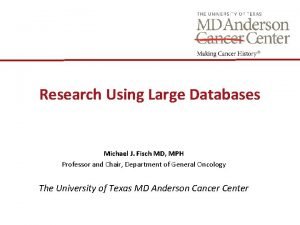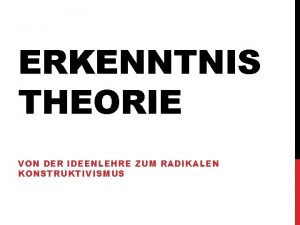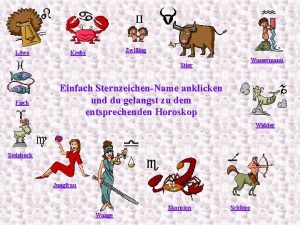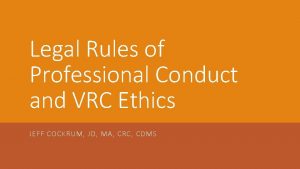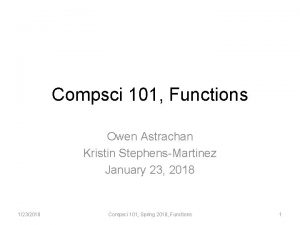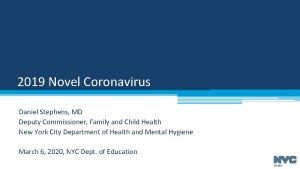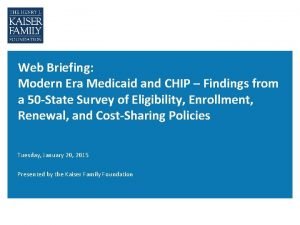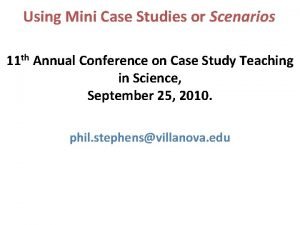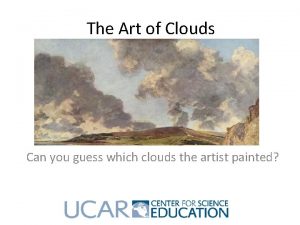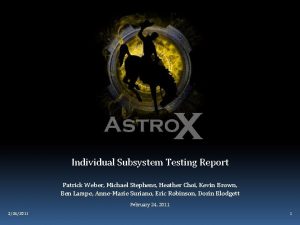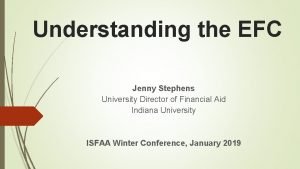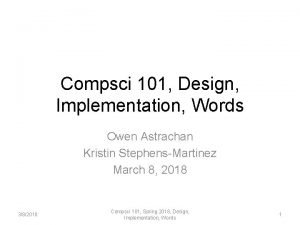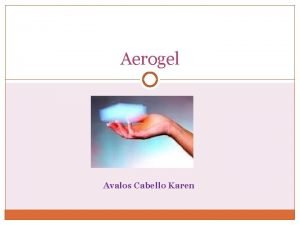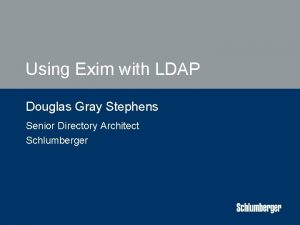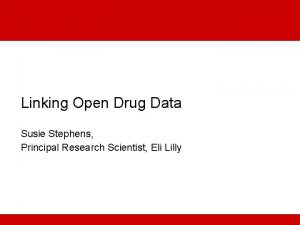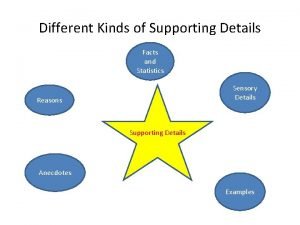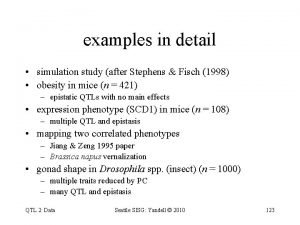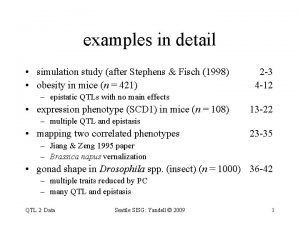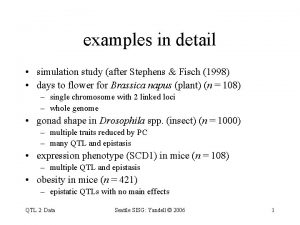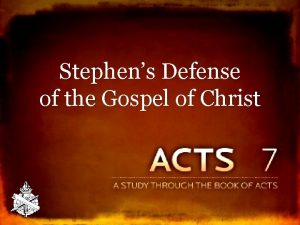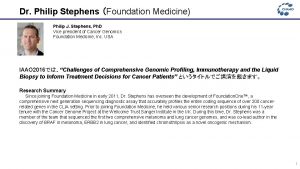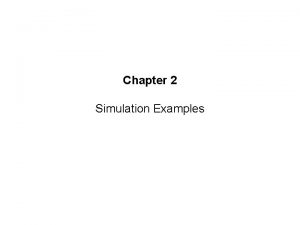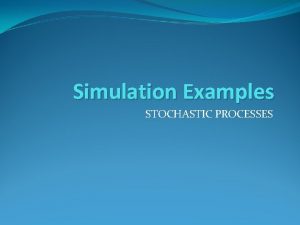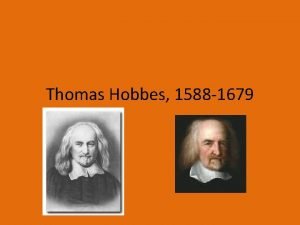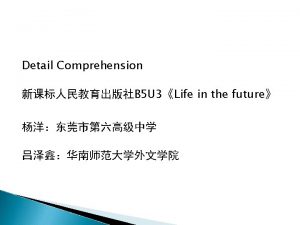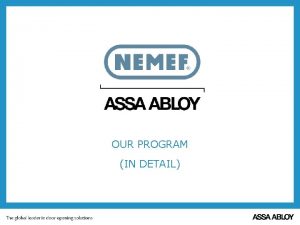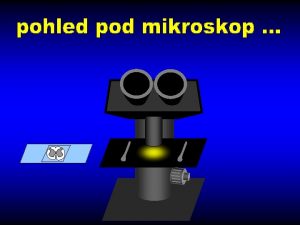examples in detail simulation study after Stephens Fisch




































- Slides: 36

examples in detail • simulation study (after Stephens & Fisch (1998) • days to flower for Brassica napus (plant) (n = 108) – single chromosome with 2 linked loci – whole genome • gonad shape in Drosophila spp. (insect) (n = 1000) – multiple traits reduced by PC – many QTL and epistasis • expression phenotype (SCD 1) in mice (n = 108) – multiple QTL and epistasis • obesity in mice (n = 421) – epistatic QTLs with no main effects QTL 2: Data Seattle SISG: Yandell © 2006 1

simulation with 8 QTL • simulated F 2 intercross, 8 QTL – (Stephens, Fisch 1998) – n=200, heritability = 50% – detected 3 QTL posterior • increase to detect all 8 – n=500, heritability to 97% QTL 2: Data QTL chr loci effect 1 2 3 4 5 6 7 8 1 1 3 6 6 8 8 9 11 50 62 107 152 32 54 195 – 3 – 5 +2 – 3 +3 – 4 +1 +2 Seattle SISG: Yandell © 2006 2

loci pattern across genome • notice which chromosomes have persistent loci • best pattern found 42% of the time Chromosome m 1 2 3 4 5 6 10 Count of 8000 8 2 0 1 0 0 2 0 3371 9 3 0 1 0 0 2 0 751 7 2 0 1 0 0 2 0 377 9 22: Data 0 1 0 SISG: 0 Yandell © 2006 2 QTL Seattle 0 218 7 8 9 0 2 1 0 1 1 0 2 13

Brassica napus: 1 chromosome • 4 -week & 8 -week vernalization effect – log(days to flower) • genetic cross of – Stellar (annual canola) – Major (biennial rapeseed) • 105 F 1 -derived double haploid (DH) lines – homozygous at every locus (QQ or qq) • 10 molecular markers (RFLPs) on LG 9 – two QTLs inferred on LG 9 (now chromosome N 2) – corroborated by Butruille (1998) – exploiting synteny with Arabidopsis thaliana QTL 2: Data Seattle SISG: Yandell © 2006 4

Brassica 4 - & 8 -week data summaries of raw data joint scatter plots (identity line) separate histograms QTL 2: Data Seattle SISG: Yandell © 2006 5

Brassica credible regions QTL 2: Data Seattle SISG: Yandell © 2006 6

B. napus 8 -week vernalization whole genome study • 108 plants from double haploid – similar genetics to backcross: follow 1 gamete – parents are Major (biennial) and Stellar (annual) • 300 markers across genome – 19 chromosomes – average 6 c. M between markers • median 3. 8 c. M, max 34 c. M – 83% markers genotyped • phenotype is days to flowering – after 8 weeks of vernalization (cooling) – Stellar parent requires vernalization to flower • Ferreira et al. (1994); Kole et al. (2001); Schranz et al. (2002) QTL 2: Data Seattle SISG: Yandell © 2006 7

Bayesian model assessment row 1: # QTL row 2: pattern col 1: posterior col 2: Bayes factor note error bars on bf evidence suggests 4 -5 QTL N 2(2 -3), N 3, N 16 QTL 2: Data Seattle SISG: Yandell © 2006 8

Bayesian estimates of loci & effects histogram of loci blue line is density red lines at estimates estimate additive effects (red circles) grey points sampled from posterior blue line is cubic spline dashed line for 2 SD QTL 2: Data Seattle SISG: Yandell © 2006 9

Bayesian model diagnostics pattern: N 2(2), N 3, N 16 col 1: density col 2: boxplots by m environmental variance 2 =. 008, =. 09 heritability h 2 = 52% LOD = 16 (highly significant) but note change with m QTL 2: Data Seattle SISG: Yandell © 2006 10

shape phenotype in BC study indexed by PC 1 Liu et al. (1996) Genetics QTL 2: Data Seattle SISG: Yandell © 2006 11

shape phenotype via PC Liu et al. (1996) Genetics QTL 2: Data Seattle SISG: Yandell © 2006 12

Zeng et al. (2000) CIM vs. MIM composite interval mapping (Liu et al. 1996) narrow peaks miss some QTL multiple interval mapping (Zeng et al. 2000) triangular peaks both conditional 1 -D scans fixing all other "QTL" QTL 2: Data Seattle SISG: Yandell © 2006 13

CIM, MIM and IM pairscan cim mim QTL 2: Data Seattle SISG: Yandell © 2006 14

2 QTL + epistasis: IM versus multiple imputation IM pairscan QTL 2: Data multiple imputation Seattle SISG: Yandell © 2006 15

multiple QTL: CIM, MIM and BIM cim bim mim QTL 2: Data Seattle SISG: Yandell © 2006 16

studying diabetes in an F 2 • segregating cross of inbred lines – B 6. ob x BTBR. ob F 1 F 2 – selected mice with ob/ob alleles at leptin gene (chr 6) – measured and mapped body weight, insulin, glucose at various ages (Stoehr et al. 2000 Diabetes) – sacrificed at 14 weeks, tissues preserved • gene expression data – Affymetrix microarrays on parental strains, F 1 • key tissues: adipose, liver, muscle, -cells • novel discoveries of differential expression (Nadler et al. 2000 PNAS; Lan et al. 2002 in review; Ntambi et al. 2002 PNAS) – RT-PCR on 108 F 2 mice liver tissues • 15 genes, selected as important in diabetes pathways • SCD 1, PEPCK, ACO, FAS, GPAT, PPARgamma, PPARalpha, G 6 Pase, PDI, … QTL 2: Data Seattle SISG: Yandell © 2006 17

Multiple Interval Mapping (QTLCart) SCD 1: multiple QTL plus epistasis! QTL 2: Data Seattle SISG: Yandell © 2006 18

Bayesian model assessment: number of QTL for SCD 1 QTL 2: Data Seattle SISG: Yandell © 2006 19

Bayesian LOD and h 2 for SCD 1 QTL 2: Data Seattle SISG: Yandell © 2006 20

Bayesian model assessment: chromosome QTL pattern for SCD 1 QTL 2: Data Seattle SISG: Yandell © 2006 21

trans-acting QTL for SCD 1 (no epistasis yet: see Yi, Xu, Allison 2003) dominance? QTL 2: Data Seattle SISG: Yandell © 2006 22

2 -D scan: assumes only 2 QTL! epistasis LOD peaks QTL 2: Data joint LOD peaks Seattle SISG: Yandell © 2006 23

sub-peaks can be easily overlooked! QTL 2: Data Seattle SISG: Yandell © 2006 24

epistatic model fit QTL 2: Data Seattle SISG: Yandell © 2006 25

Cockerham epistatic effects QTL 2: Data Seattle SISG: Yandell © 2006 26

obesity in CAST/Ei BC onto M 16 i • 421 mice (Daniel Pomp) – (213 male, 208 female) • 92 microsatellites on 19 chromosomes – 1214 c. M map • subcutaneous fat pads – pre-adjusted for sex and dam effects • Yi, Yandell, Churchill, Allison, Eisen, Pomp (2005) Genetics (in press) QTL 2: Data Seattle SISG: Yandell © 2006 27

non-epistatic analysis single QTL LOD profile QTL 2: Data multiple QTL Bayes factor profile Seattle SISG: Yandell © 2006 28

posterior profile of main effects in epistatic analysis main effects & heritability profile QTL 2: Data Bayes factor profile Seattle SISG: Yandell © 2006 29

posterior profile of main effects in epistatic analysis QTL 2: Data Seattle SISG: Yandell © 2006 30

model selection via Bayes factors for epistatic model number of QTL pattern QTL 2: Data Seattle SISG: Yandell © 2006 31

posterior probability of effects QTL 2: Data Seattle SISG: Yandell © 2006 32

scatterplot estimates of epistatic loci QTL 2: Data Seattle SISG: Yandell © 2006 33

stronger epistatic effects QTL 2: Data Seattle SISG: Yandell © 2006 34

model selection for pairs QTL 2: Data Seattle SISG: Yandell © 2006 35

our RJ-MCMC software • R: www. r-project. org – freely available statistical computing application R – library(bim) builds on Broman’s library(qtl) • QTLCart: statgen. ncsu. edu/qtlcart – Bmapqtl incorporated into QTLCart (S Wang 2003) • www. stat. wisc. edu/~yandell/qtl/software/bmqtl • R/bim – initially designed by JM Satagopan (1996) – major revision and extension by PJ Gaffney (2001) • whole genome, multivariate and long range updates • speed improvements, pre-burnin – built as official R library (H Wu, Yandell, Gaffney, CF Jin 2003) • R/bmqtl – – collaboration with N Yi, H Wu, GA Churchill initial working module: Winter 2005 improved module and official release: Summer/Fall 2005 major NIH grant (PI: Yi) QTL 2: Data Seattle SISG: Yandell © 2006 36
 After me after me after me
After me after me after me If any man comes after me
If any man comes after me Major and minor details
Major and minor details What are the signal words
What are the signal words Warum sind wale keine fische
Warum sind wale keine fische Michael fisch md
Michael fisch md Konstruktivismus fisch kuh
Konstruktivismus fisch kuh Fortpflanzung fische klasse 5
Fortpflanzung fische klasse 5 Meerschweinchen plural
Meerschweinchen plural Stier fisch
Stier fisch Crc code of ethics
Crc code of ethics Paul stephens at&t
Paul stephens at&t Kristin stephens-martinez
Kristin stephens-martinez Python tutor ames
Python tutor ames Mark stephens knoxville
Mark stephens knoxville Maoni stephens
Maoni stephens Ron stephens berkeley county wv
Ron stephens berkeley county wv Ron stephens berkeley county wv
Ron stephens berkeley county wv Daniel stephens md
Daniel stephens md Jessica stephens cms
Jessica stephens cms Mini case study examples
Mini case study examples Ted doru pope
Ted doru pope Graeme stephens altocumulus
Graeme stephens altocumulus Graeme stephens altocumulus
Graeme stephens altocumulus Patrick michael stephens
Patrick michael stephens Elton b stephens
Elton b stephens James stephens irb
James stephens irb Jenny stephens
Jenny stephens Aine stephens
Aine stephens Kristin v stephens-martinez
Kristin v stephens-martinez Becca steier
Becca steier Verwalterwechsel übergabe unterlagen
Verwalterwechsel übergabe unterlagen Samuel stephens kistler
Samuel stephens kistler Gray stephens
Gray stephens Nangrong school
Nangrong school Susie stephens
Susie stephens 5 types of supporting details
5 types of supporting details





